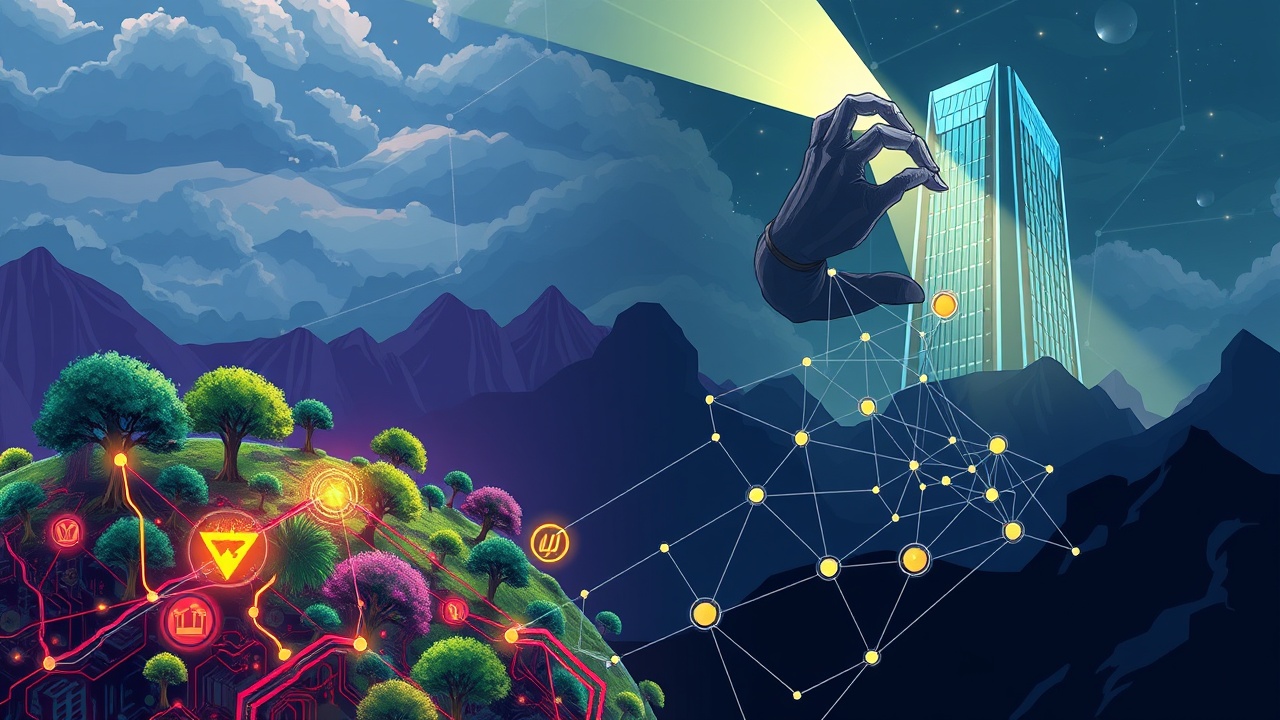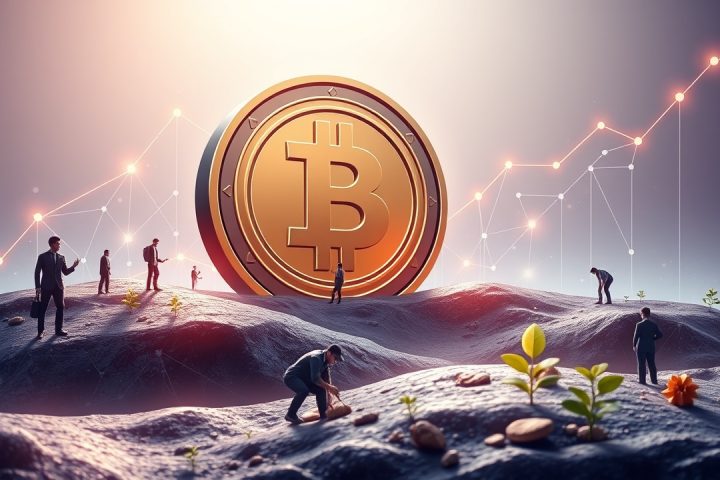The Evolution of the Digital Landscape
The digital landscape has evolved into two distinct realms: Web2 and its emerging counterpart, Web3. Born from the aspirations of innovators championing the ideals of decentralization and personal freedom, Web3 initially resembled an unrefined wilderness where a community of builders thrived without overlords. However, this untouched domain soon attracted the attention of seasoned investors from Web2, curious about the untapped potential that lay within this budding ecosystem.
The Impact of Bitcoin
As these newcomers cautiously observed, the first significant migration was sparked by Bitcoin, regarded as the most valuable entity on this fresh frontier. Here, claims of ownership and knowledge determined power dynamics, with early settlers keen on securing their fortunes. As their wealth established a foothold, they soon realized that Web3 offered broader horizons.
Expansion Beyond Bitcoin
Aggressively exploring beyond Bitcoin, they claimed new territories, giving rise to platforms such as Ethereum, Solana, and Polkadot among numerous others. Yet, the initial influx of users led to a scarcity of block space, where early blockchain systems had stringent limitations on transaction capacity, creating intense value for limited resources. Owning even a modest share of this block space held significant weight in the new economic order.
Innovation in Response to Scarcity
In response to escalating competition, innovative solutions surfaced that transformed the landscape. Layer 2 technologies, Rollups, and alternate chains were introduced, increasing the block space dramatically and transitioning from scarcity to abundance. Thus, the competitive landscape shifted, allowing a multitude of projects to flourish.
The Pitfalls of Abundance
However, this surging availability proved to have its own pitfalls. The perceived value of block space diminished, raising questions about the allure of cheap transaction storage. While the initial hope was for a mass influx of Web2 users to bridge into Web3, many remained reluctant. Stories circulated of adventurous pioneers who faced peril instead of profit, raising alarms about the dangers lying in this new terrain.
The Complications for Newcomers
A handful of Web2 individuals did embrace the leap, spurred by enticing narratives of overnight wealth, diving into investments across a myriad of tokenized properties. Yet, this new landscape was largely shaped by those who arrived first; the unwritten rules of engagement were familiar only to the seasoned. As more Web2 users ventured into this complicated world, they frequently found themselves ensnared by its intricacies.
The Marketplace and Its Challenges
The multitude of available options, paired with emerging scams masked as legitimate opportunities, fostered a tense environment. The visibility of market manipulators and information gatekeepers further complicated the quest for genuine engagement, preying on the uninformed. Despite cheaper block space, the anticipated migration has been sluggish—individuals from Web2 have hesitated, observing the rapid rise and fall of numerous projects and the volatility of wealth within Web3.
Speculation and Power Dynamics
Amid this ongoing chaos, a thriving marketplace has emerged, where trading tokens—essentially the real estate of this new digital landscape—has grown into an economic cornerstone. The cycle of speculation is relentless; nations rise, attract attention, and plummet just as quickly. Each day, new assets enter this competitive arena, flipping hands swiftly as fortunes shift.
The Compromised Ideals of Web3
While settlers seek their fortunes, bridge operators and market makers reap considerable benefits from every transaction. Developers, rather than focusing solely on innovative practices, are motivated by the opportunity to create land for market consumption. Marketing narratives further entice hopeful participants into the fold. Yet, the initial ethos of a liberated, decentralized digital space has become overshadowed by capitalistic principles. The foundational ideals of Web3 are now compromised by the familiar forces of power and control that once defined Web2.
The Elusive Dream of Decentralization
As this brave new world continues to expand, the dream of genuine decentralization feels increasingly elusive. Many new participants hoping for wealth find themselves exiting with diminished resources, while a select few maintain their grip on the burgeoning digital domain, continuing to mold it to their advantage.

















